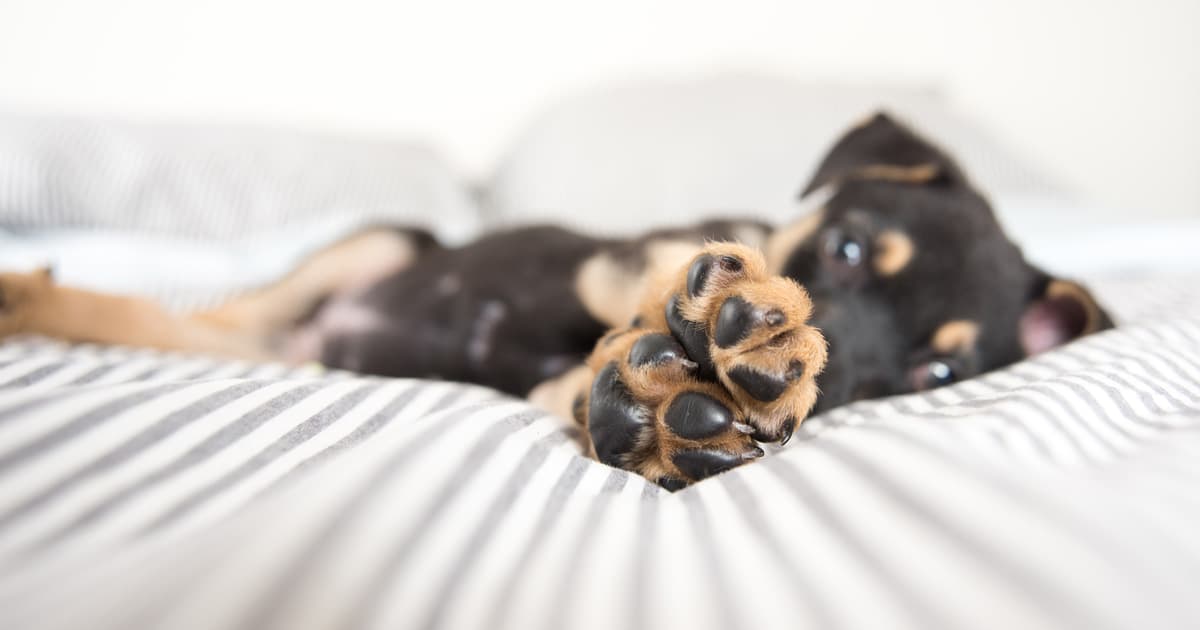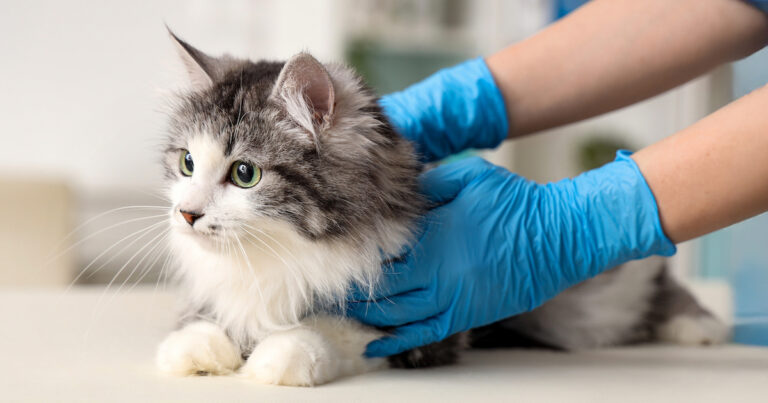Welcome to our Peculiar Pet Facts series, where we investigate the oddities of our pets and explore the science behind them.
Most of us have probably heard that dogs don’t sweat. And if we’re talking about how dogs cool themselves, it’s true that sweat isn’t the main way dogs release body heat when they’re a little hot under the collar. But did you know that dogs can actually sweat, just a little bit? It’s pawfectly true!
Dogs Do Have Sweat Glands
Dogs actually have two types of sweat glands: apocrine glands and merocrine glands. Apocrine glands are the glands that humans use to sweat, but in dogs these glands aren’t used to release sweat; instead they secrete pheromones for sending “scent messages” to other dogs.
However, dogs do have merocrine sweat glands in their paw pads (and possibly noses) that can produce sweat. But this tiny amount of sweat isn’t going to cool their body down — so that’s where panting comes in.
Panting: The Best Way to Cool a Hot Dog
The main way that your dog regulates their temperature is through panting. Panting allows air to circulate quickly through their respiratory system and for water to evaporate from your dog’s tongue, mouth and upper airways, which cools their body down. If dogs are hot, they pant more than usual to release more body heat. And here’s a bonus fact: Dogs can also release a little body heat through blood vessels close to the surface of their skin.
Water, Water and More Cool Water
Panting (and to a lesser extent those sweaty paws) causes moisture loss from your dog’s body. This water needs to be replaced; otherwise they could become dehydrated, which can lead to serious health conditions. Water helps your dog’s body maintain a normal temperature, especially when it’s evaporated during panting (or through that little bit of sweating).
If you notice your dog is panting more than usual, find a shady area or an air conditioned room and offer them cool, fresh water. Always make sure your dog has access to plenty of water, particularly when they’re outside on a hot day. If you’re away from home and it’s a hot or humid day, it’s a good idea to pack a collapsible bowl and water bottles so you can give your dog water, no matter where you are.
Sometimes Panting Isn’t Enough
If a dog can’t pant fast enough, or if the environmental temperature and/or humidity is too high, their body temperature can increase to dangerous levels. A high core temperature can cause heat exhaustion or worse, heat stroke. Signs of heat exhaustion include excessive panting, moving slowly, lots of drooling, restlessness and red skin on the dog’s muzzle, ears and belly. If a dog’s body temperature rises to greater than 104°F, they are at risk of heat stroke, which can be fatal. Overweight dogs are particularly at risk for developing heat stroke. Signs of heat stroke include pale or red gums, staggering or wobbling when walking, seizures, fast heart rate, vomiting and loss of consciousness.
If you dog is showing signs of heat exhaustion, you should move them to a cool area (like an air-conditioned room, if available) and encourage them to drink fresh, cool water (but don’t force them to drink). If you suspect your dog has heat stroke, this is a medical emergency and you should seek veterinary care immediately. If possible, cool your dog down with room-temperature water (not ice water) or apply wet towels before getting them into the car. Then drive them to a veterinary clinic with the air conditioning on or the car windows down.
Panting is the main way for dogs to release body heat, but they do have the ability to sweat from their paw pads. So if dogs can sweat from their paws, does that mean they get “sweaty palms” when they’re anxious? A question for another time!

RELATED POST: Protect Your Pets from Summer’s Heat







